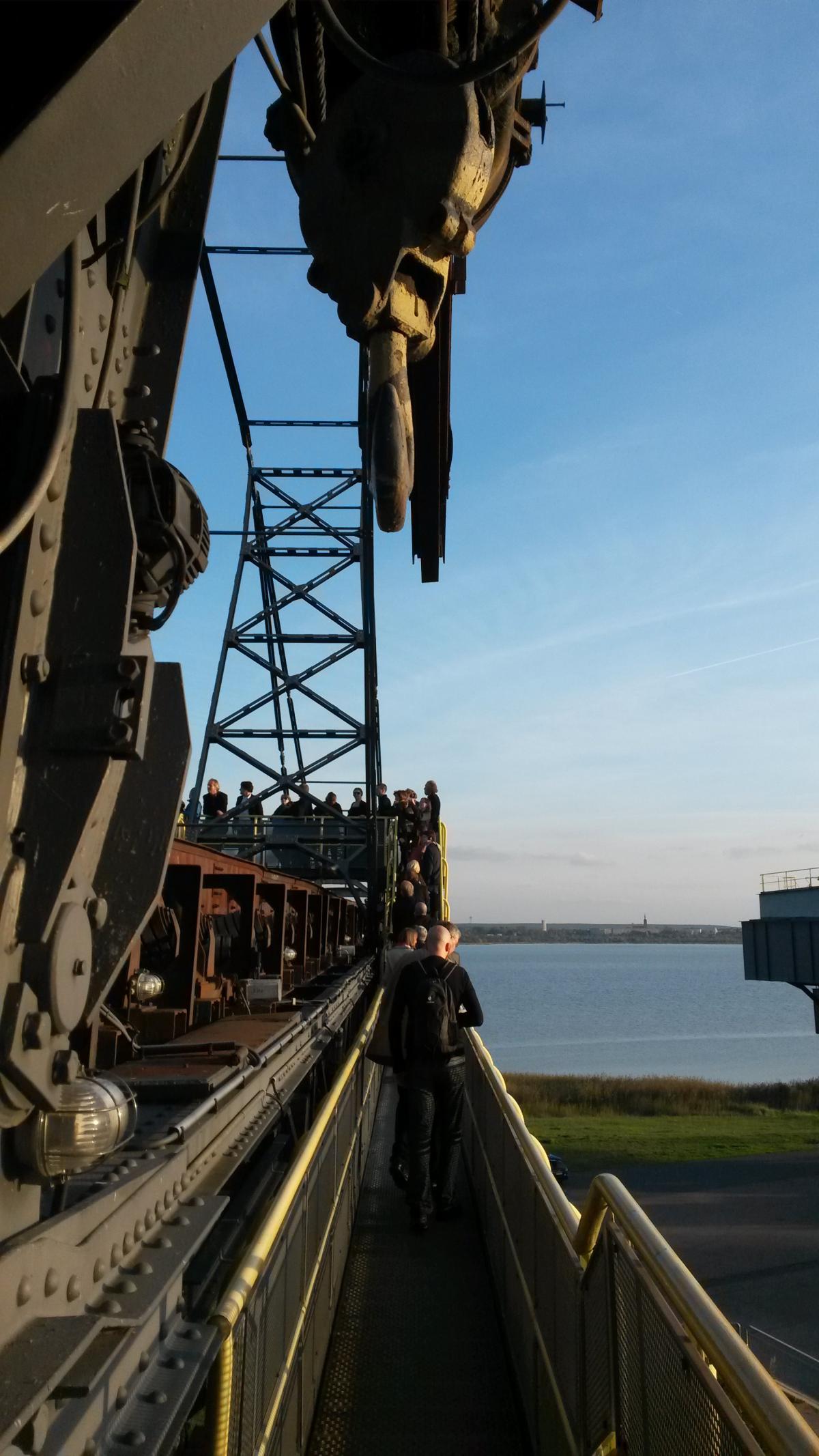Report of German - Polish Media Programme Part I : Revelling in green pastures
CLEW’s first press trip heads into central Germany’s lignite-mining region
From up here, we have quite a view. Enormous steel contraptions tower above us on all sides, frozen in time. Despite the eerie silence of these giant machines, it seems they could come to life in a flash, carving up the landscape as they did for decades before.
This scene leaves little doubt as to the subject of our German-Polish press trip: lignite. Or rather, what happens to a region in the throes of structural change – the endings and new beginnings that come with a shift away from coal.
Until the fall of East Germany in 1990, huge coal excavators tore at the landscape, leaving a peninsula surrounded on three sides by flooded opencast mines. Now, the clatter of machinery has given way to the blare of music and a tumult of dancing bodies. The site, between Dessau and Wittenberg, has been transformed into Ferropolis, a huge open-air museum of industrial culture where young people gather from across Europe for music festivals, letting loose in the midst of five steel giants – monuments to the bygone mining industry. Every year around 100,000 people arrive with more than just the desire for musical experience – they also bring their purchasing power and demand for tourism services.
Ferropolis is the first stop of our three-day media programme, not only the first trip organised by the Clean Energy Wire, but also the very first press trip to take a bi-national look at the challenges of decarbonising the energy system. Or, to put it another way, what happens to jobs, industry and the economy when a region gives up coal? With two Dutch journalists joining us, we’re not just examining the question from a Polish and German perspective, but also from the wider European perspective of looking at regions that try to find an exit-strategy for coal.
The area surrounding the towns of Anhalt, Dessau and Bitterfeld is a case study in transforming a lignite coal-producing region. Before German reunification, 100,000 people worked in the energy sector in this part of East Germany, mining lignite and converting it into electricity and heat. A quarter of a century later, just 3,500 are employed in opencast mines in this area, known as the Middle German coal district. The end of coal mines and power plants and cuts in the workforce came more suddenly – and more harshly – here than in Lusatia, a region that straddles the German-Polish border. But as a result, this area is much more advanced in its structural readjustment and today has a far more diversified economic structure.
Exactly what do rupture and structural change mean for people? What comes after coal? On our trip, we asked employees of public utilities and former coal workers, industrial economists and unionists, development planners and solar pioneers, festival organisers and members of parliament, local politicians, property managers and those from the wind power industry. But no one we spoke with gave a simple answer. Perhaps that’s because nearly everyone is too preoccupied with the day-to-day challenges of energy transition. Perhaps it’s because there was no grand master plan for abandoning coal, but instead a succession of small steps which now allow the region to proudly call itself “Anhalt-Dessau: The Avantgarde of Energy” – a reference to Dessau’s more famous progressive movement, the modernist Bauhaus design school of the early 20th century.
A look at some of these small but important steps were part of our itinerary: steel manufacturer AMBAU, which produces towers for wind power systems in the same halls where coal excavators were once repaired, the German Biomass Research Centre (DBFZ) that connect the region’s historical ties to the chemical industry with renewable energies. Or the Federal Environment Agency (UBA), which has acted as a public think-tank for environmental policy and consciously set up shop in the very place where East German industrial practices had left their most devastating ecological damage.
Whether or not this is a particularly German way of dealing with structural change, and how the Polish approach differs, will come to light in the second part of our German-Polish media programme. In March 2015, journalists will travel to Polish Upper Silesia to understand how coal has shaped industrial and economic structures there, and how a climate-friendly energy industry might inherit its legacy.
By comparing, rather than judging, we will bring together the experiences of the Anhalt-Dessau-Bitterfeld region in Germany and Upper Silesia in Poland, taking in the Polish cities of Gleiwitz and Kattowitz. It is particularly fitting that Dessau-Roßlau and Gleiwitz are partner cities and that both assumed sponsorship for our programme.
From the first trip, we can conclude from the journalists’ questions that the debate over energy politics in the two countries is very different. Polish and German journalists were interested in very different aspects of what they saw. German participants tended to focus on technical aspects of implementation, while Polish participants were interested in more broadly in German energy policies.
Perhaps we will see the reverse when we visit Poland. We can already say that at every point of the programme, exchanging views with colleagues from next door broadened everyone’s horizons. From up here, the view is best.

